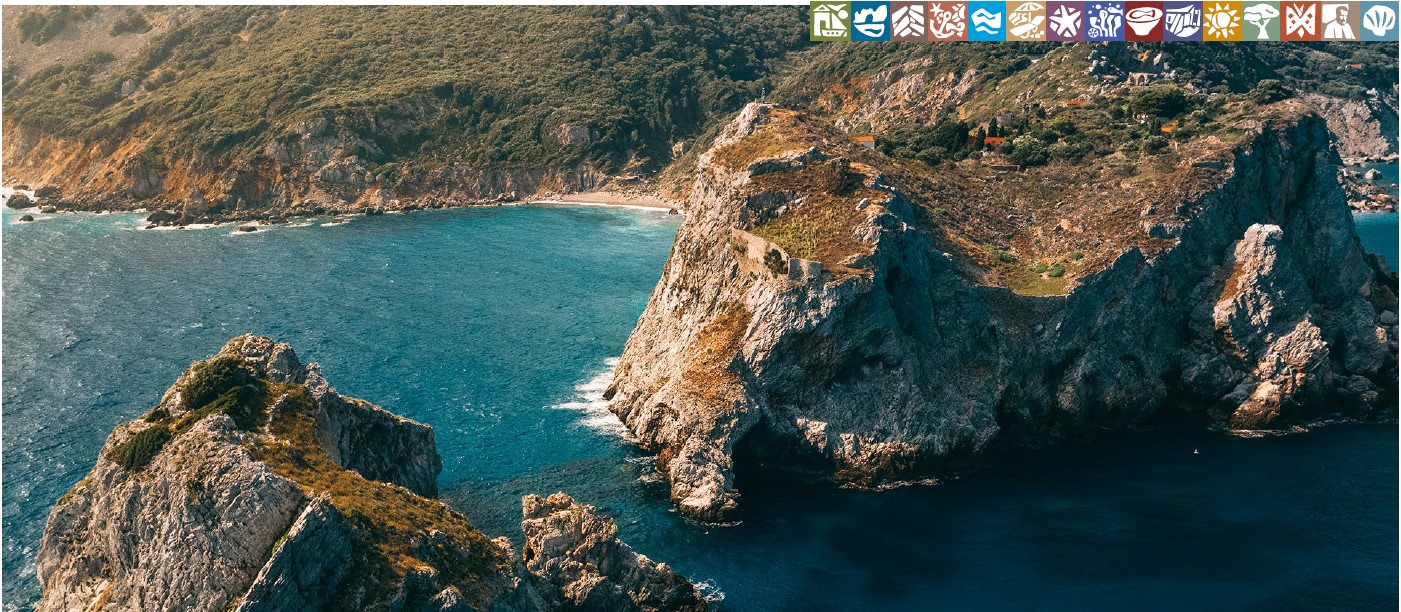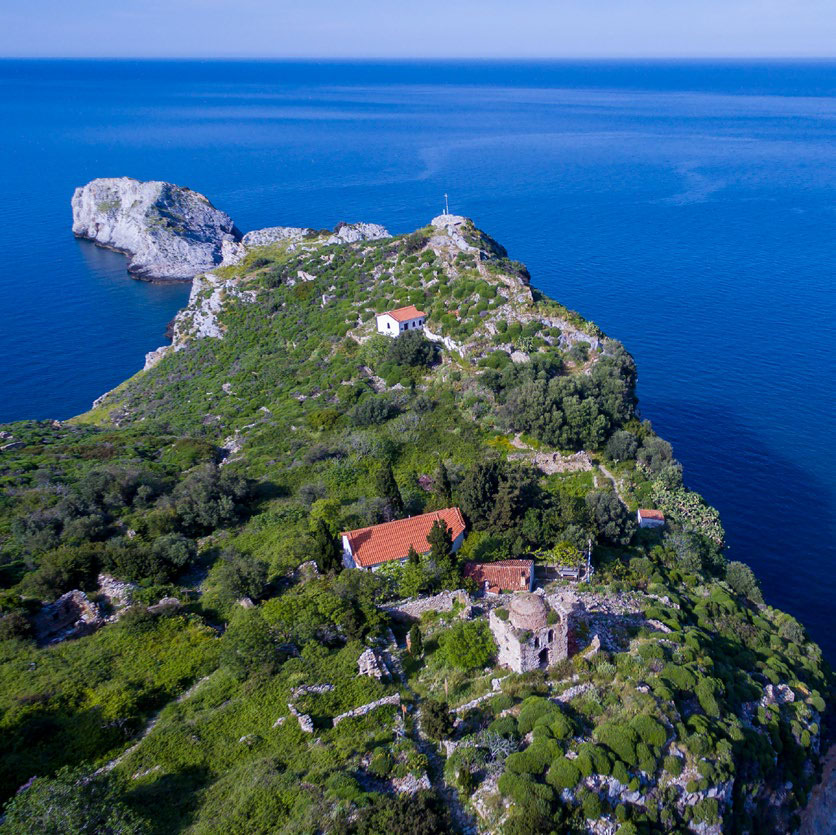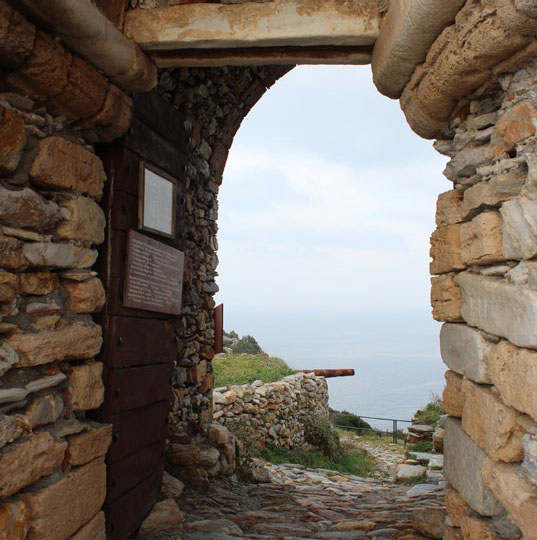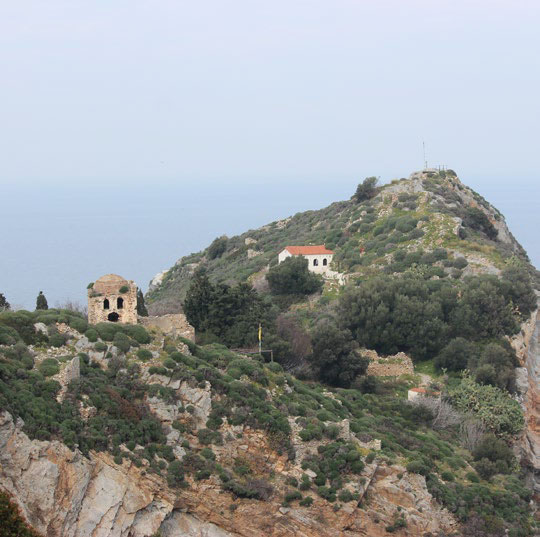
Kastro
reach it. However, there is a spot where you can park your vehicle
and then take a half-hour walk up to the old town of Kastro.
That said, the best way to approach it is through a kaiki boat
from the old port of Skiathos, so you can enjoy the ride and
view.
Around 1360, because of the continuous pirate raids, the Skiathians
had to abandon the ancient town of Skiathos and establish
a new town in Kastro spanning roughly 25.000m2. It is
a rocky peninsula on the north of the island, a natural fortress
hanging above the sea, since it is built on top of an imposing
rock with panoramic view. That’s why it’s surrounded by a weaker
wall on its three sides facing the sea, while on the side where
it connects to the land strong sky-high walls were built, with
cannons and crenelations scattered all over. The fortress’ point
of contact with the land was a wooden drawbridge connecting
its gate with the butte across it. There was a rooftop on top of
the gate that had crenelations and a box machicolation.

Since its founding until 1453, Kastro was ruled by the Byzantines, then until 1538 by the Venetians and from 1538 by Hayreddin Barbarossa, the Pasha of the Turkish fleet until 1821. For a short period of time around 1660, Kastro passed again in the hands of the Venetians after the siege of Francesco Morosini. During all these years, the life of the inhabitants was extremely turbulent, at times even torturous since, apart from the constant raids from pirates and aspiring conquerors, they had to deal with the lack of space on the inside of the fortress. the houses were small and built very close to each other and, except for the numerous churches, there were no other structures or spaces for the people. Kastro had 400 to 500 houses, 4 parishes and more than twenty little churches - even a mosque without minaret and a Castellan’s Office left over from the Turkish Rule- as well as the necessary water tanks. The Cemetery was outside of Kastro.
After the island’s liberation from the Turks, Kastro came into Greek hands and following the declaration of Greece as an Independent State in 1830, Kastro was abandoned and slowly turned desolate. The 1500 give or take residents moved to the spot where Skiathos town can be found today and rebuilt it using materials from Kastro: they didn’t just take their belongings but also all building materials that could be reused, such as doors, windows, frames, roofs and timber. Thus, Kastro not only got deserted suddenly but was also destroyed beyond repair. Nowadays, what’s left is: house ruins, two parish churches (Christos, Saint Nicholas), ruins of two churches (Saint Vasileios and Saint Marina), a part of the wall with the gate, the box machicolation, the half-destroyed mosque and some ruins of the Turkish Castellan’s Office as well as two water tanks and the cannon of Anagkià.
Castro combines the majestic wild natural beauty with the history told by the dilapidated vestiges. From up here, between heaven and earth, the view is spectacular.
Alexandros Papadiamantis refers to Kastro in many parts of his work.







